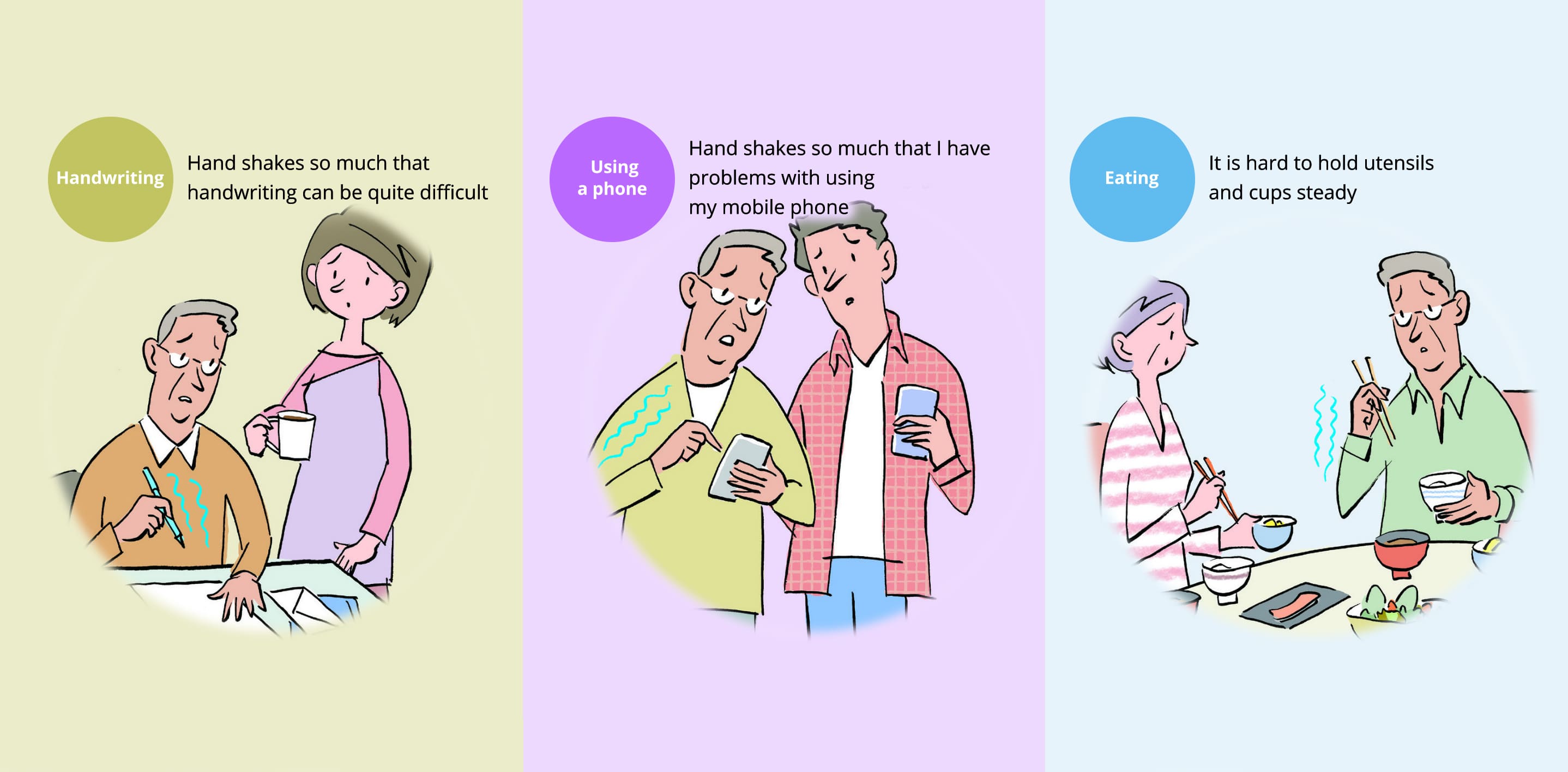
Does having tremor interfere severely
with activities of daily living?
If you have above symptoms, you may have essential tremor disorder or Parkinson's disease.
Start your appointment request here
Contact Us
Parkinson’s Disease
and Movement Disorder Clinic
[Days/Hours of Operation] Monday, Wednesday and Saturday: 9:00 to 12:00 (excluding Sundays, holidays and Year-end and New Year’s holidays )
[Schedule your appointment] 8:30 to 17:00 (excluding Sundays, holidays and Year-end and New Year’s holidays )
Essential tremor is a movement disorder that causes uncontrollable shaking, or tremors of the hands and/or head when performing an action, like writing
Learn more about essential tremorA body part on one side of the body (usually a hand or foot) shakes slightly when you’re not using it and slowing and stiffening movements and trouble walking.
Learn more about essential tremor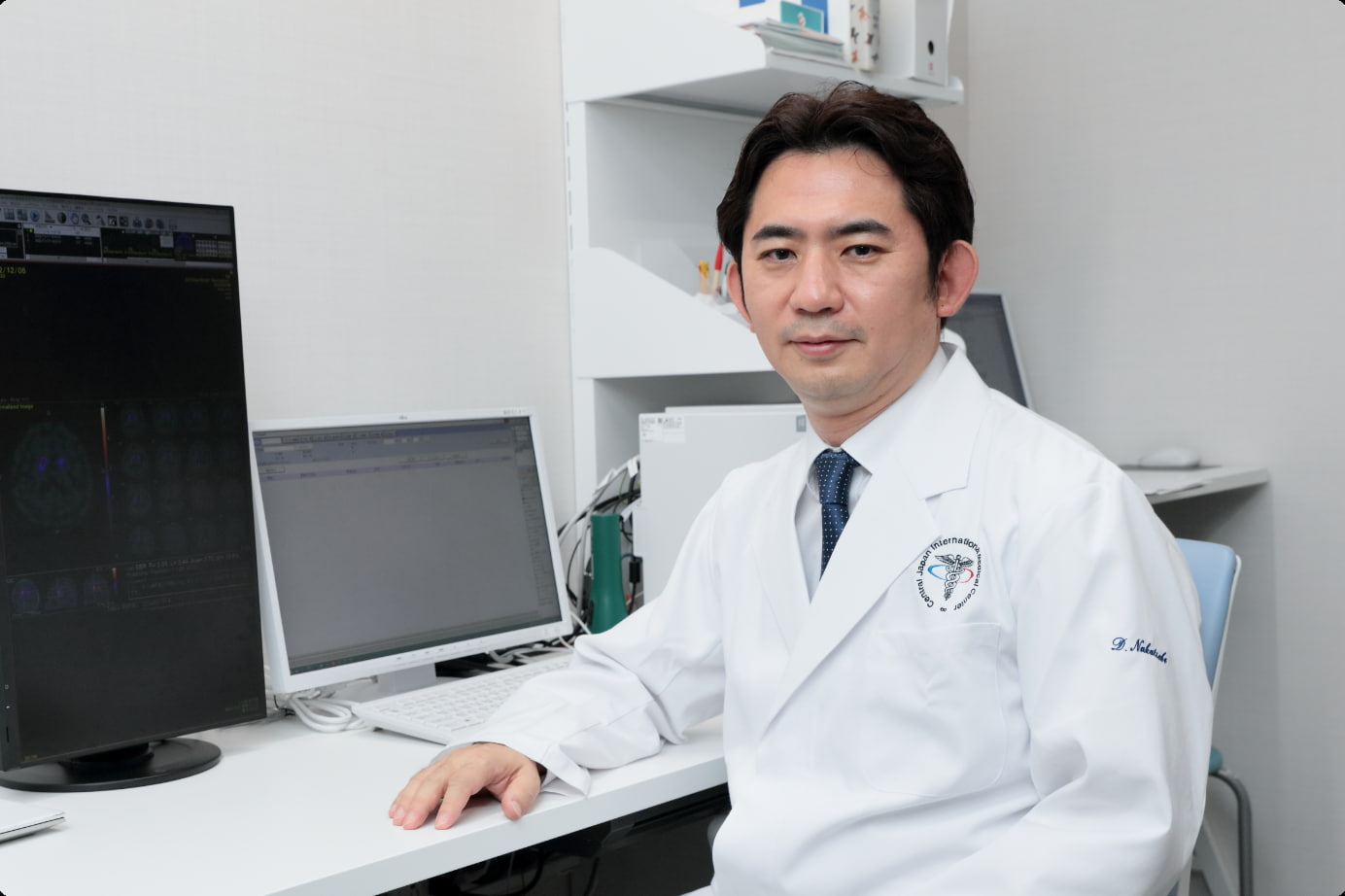
Head of the Functional Neurosurgery Department
Head of Parkinson’s Disease and Movement Disorder Center
DAISUKE Nakatsubo
I have been practicing neurosurgery for 20 years after becoming certified as a neurosurgeon and specialize in the surgical treatment of movement disorders including Parkinson's disease, essential tremor and dystonia.
While many movement disorders are typically not life threatening, but it may cause challenges, they can impair a patient’s independence and ability to complete daily tasks. It affects your physical, emotional and psychological well-being. Medication is the first-line treatment for the management of Parkinson's motor symptoms, however, choosing the right time for surgery may help maintain your quality of life and allow you to continue working.
If you haven't officially diagnosed with Parkinson's disease or essential tremor or do not achieve acceptable tremor relief from medication or you have already received a surgical therapy include DBS, but no improvement in symptom management. Don't give up hope. We offer a one-stop service for patients with neurological concerns including tremor and Parkinson's disease.
Your symptoms persist, but your doctor doesn't change your medicine
Symptoms that interfere with everyday tasks including work and household chores
Medications are not as effective as before in managing symptoms
Have motor symptoms that are not adequately controlled by medication
Your doctor keeps saying he/she is reluctant to increase the dose of the medicine
Your doctor has told you that surgery is not a suitable option for you
Find out more about FUS and contact us now
Contact Inquiry Form[Days/Hours of Operation] Monday, Wednesday and Saturday: 9:00 to 12:00 (excluding Sundays, holidays and Year-end and New Year’s holidays )
[Schedule your appointment] 8:30 to 17:00 (excluding Sundays, holidays and Year-end and New Year’s holidays )

"An incision-free treatment "
for involuntary shaking or tremor
Very first in Gifu prefecture and the second medical facility within the Tokai three prefectures to introduce an incision-free treatment for neurological conditions !
FUS
We have started treating patients with Focused Ultrasound Treatment (FUS)
FUS is suited for patients who are suffering from significant hand and leg tremor due to Parkinson’s disease or essential tremor.
FUS for Parkinson's disease delivers beams of ultrasonic energy across the skull from multiple directions to create heat that destroys brain cells that cause movement problems with the potential to improve the quality of life.
FUS is non-invasive, so there's no incision or opening of the skull.
FUS can be a treatment option for people with Parkinson's disease who have tremors that are not adequately controlled by medication.
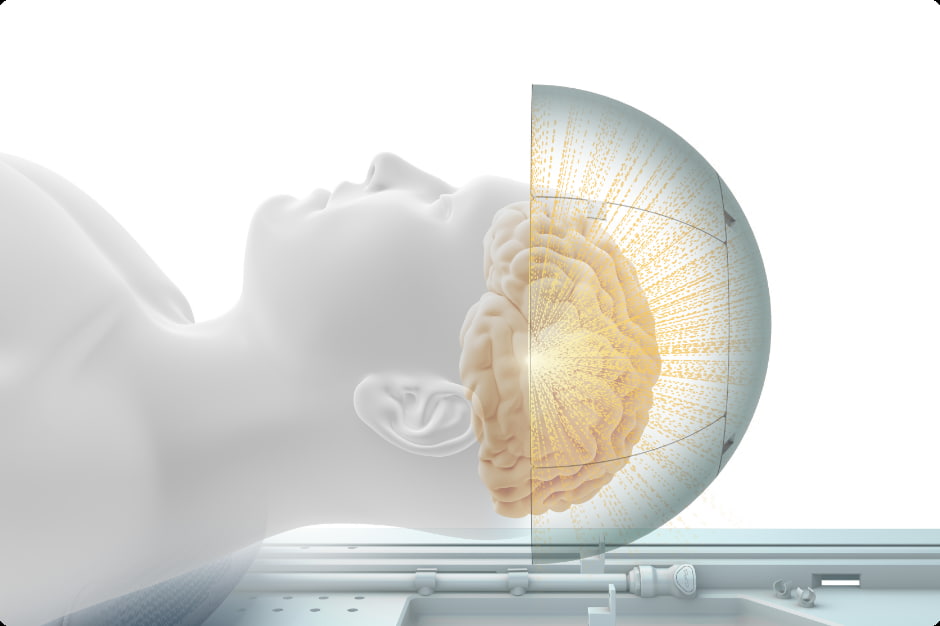
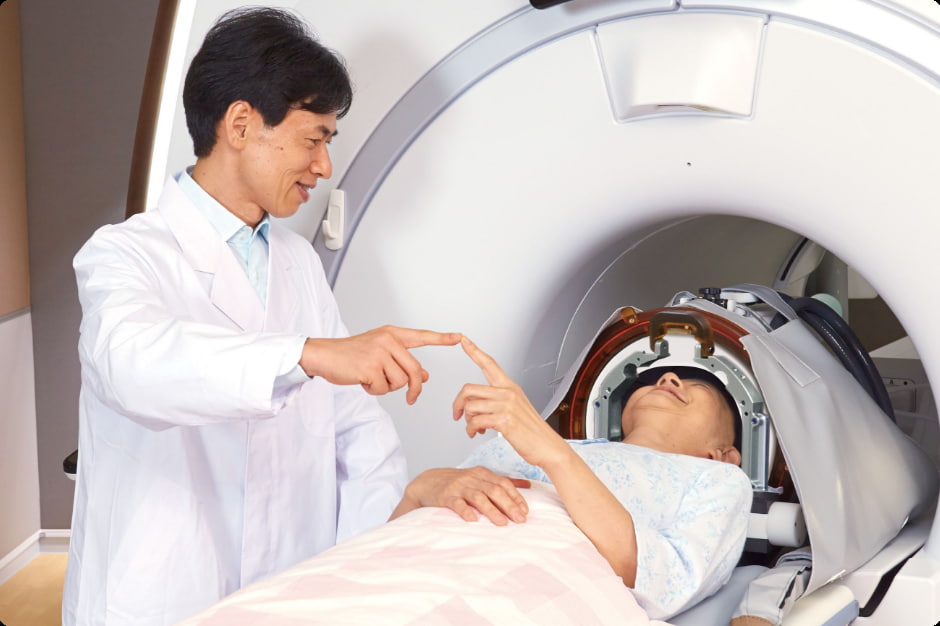
Play Video About Insightec's Essential Tremor Treatment
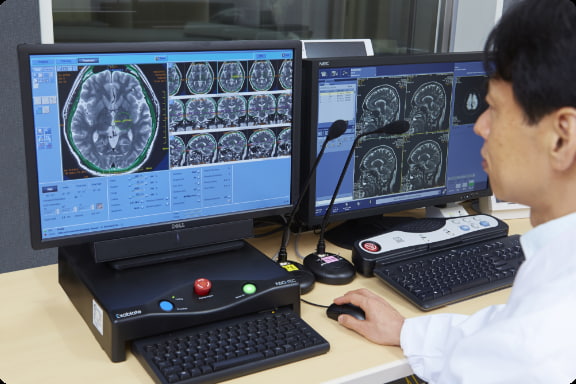
A CT scan is done to determine if the shape, thickness and density of your skull as well as MRI scan and blood test so see if you are suitable for the treatment.
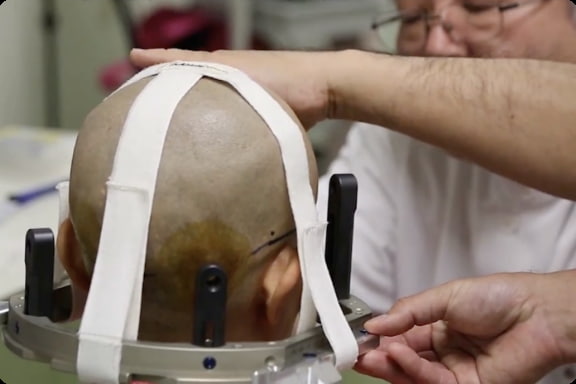
Before the procedure, your head will be shaved to prevent any obstruction of the sound waves. You will have a frame put on which ensures that your head remains completely still while in the MRI machine. You will be given a local anesthetic in the skin around your scalp so that a frame can be secured to your head.
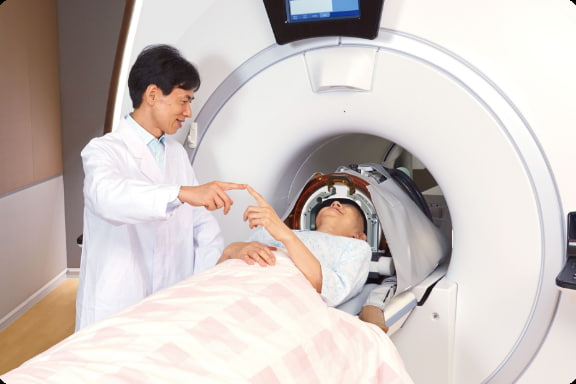
During the procedure, you will be awake and you will be moved into the MRI machine. You’ll be given a “stop” button that lets you signal your team to stop the procedure at any time for any reason.
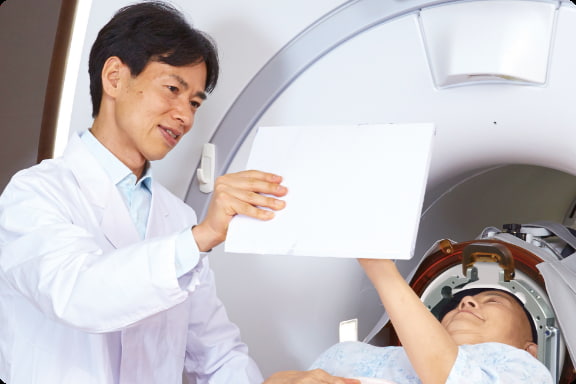
Patients are asked to communicate any side effects and to see how their tremor is responding. This allows the doctor to make real-time adjustments to minimize side effects and ensure the procedure is treating the exact spot responsible for the patient’s tremors.

Once treatment is finished, your doctor will assess you. More MRI images will be taken the following day to see how well the treatment worked. Your doctor will let you know when you can go home and when you need to return for a follow-up visit.
Provided by InSightec
Find out more about FUS and contact us now
Contact Inquiry Form[Days/Hours of Operation] Monday, Wednesday and Saturday: 9:00 to 12:00 (excluding Sundays, holidays and Year-end and New Year’s holidays )
[Schedule your appointment] 8:30 to 17:00 (excluding Sundays, holidays and Year-end and New Year’s holidays )
Shaking or trembling movements are also known as tremor, it causes involuntary and unintended movements of your body parts. Essential means "No known causes" in medical terms.
Most people have never heard of "Essential tremor", however, researchers estimate that essential tremor is affecting an estimated around 4% of people aged 40 and older, 5 to 14% of people aged 65 and older.
Medication is the first choice for essential tremor's treatment before considering you for any surgical procedure. Surgical treatment may be considered if you do not tolerate medications or may have an unsatisfactory response.
Parkinson's disease is caused by a loss of nerve cells in part of the brain called the substantia nigra. This leads to a reduction in a chemical called dopamine in the brain which helps to regulate movement. Experts are still unsure of the exact cause of Parkinson’s disease (PD). The primary motor symptoms of PD include slowness of movement, rigidity and postural instability. A resting tremor in the hands is a common motor symptom of PD that's noticeable when a person is relaxed, like with their hands on their lap.
Statistic shows that there are approximately 160,000 people with Parkinson’s disease (PD) living in Japan. That means approximately 1 to 1.5 out of every 1,000 people are living with PD. PD is more common in older people, with 1% of people over 60 years old affected.
Parkinson's medications are the mainstay of treatment. Surgical approach may be considered for people with PD when drug therapy is no longer sufficient to manage symptoms or if their side effects interfere with a person’s daily activities.